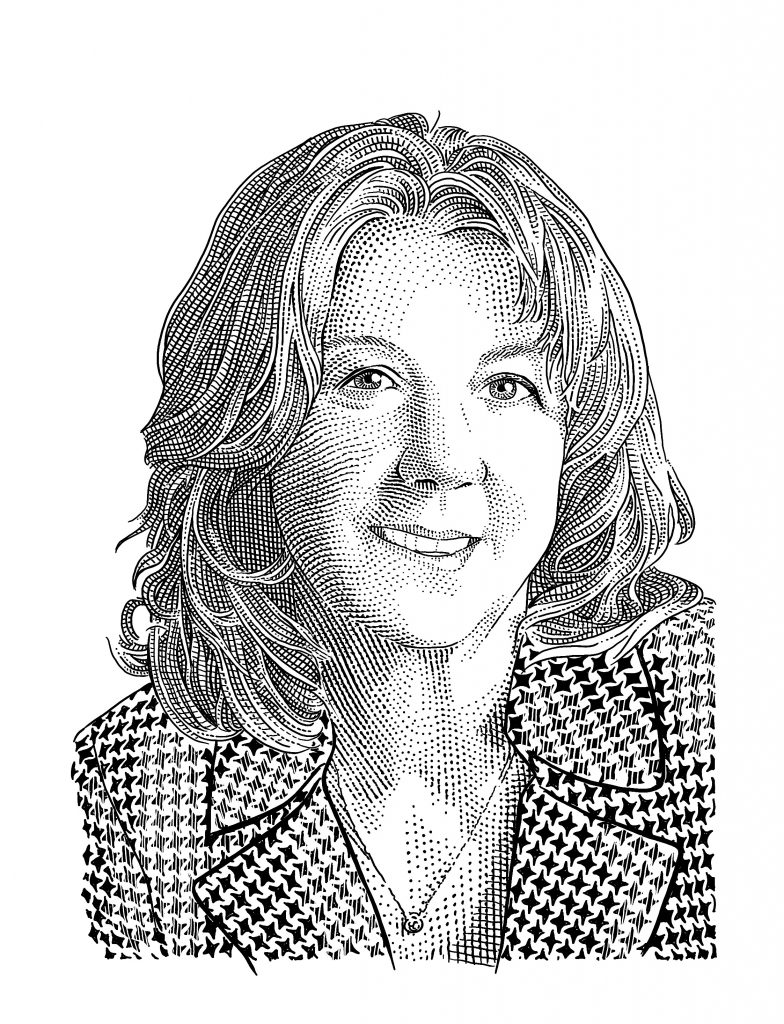Karen Bird, Chief Information Officer for Hooters, has spent time in both finance and technology roles before reaching her current position. This background provided her with the skills and leadership expertise to manage technology functions in order to improve restaurant operations and overall customer experience. As the leading technology executive at her organization, her leadership and insights are vital to operational success.
We had the chance to sit down with Karen and talk about her career progression to CIO for Hooters, some of the initiatives she has overseen to date and her goals for future innovation. Her list of previous accomplishments is impressive, and Karen has plans for the future to continue to drive success for the Hooters brand.
In this issue, Karen spoke with us regarding her key objectives and the importance of partnerships with her delivery service providers.

Walk me through your CIO path. How did you decide to pursue a career in technology, and how did you progress to your current organization?
I started in accounting at Burger King, however, I always loved working with the IT folks in our corporate office across the street. Eventually I was offered a job in IT, and I took a position that supported all the regional accounting centers. That was the start of my technology career, and I never left it after that.
I would say that at that point in my career I didn’t necessarily aspire to be a CIO, but I did aspire to learn all that I could about every function in IT. I spent time in development, project management, database management, among others. After some time, I decided that I wanted to move into a leadership role.
I left Burger King to support that wish, and that’s when I went to Denny’s. I always set goals for myself, and once I determined that I wanted to be in a technology leadership role, I followed my goals to try to get to that point. It’s not always about moving straight up. Often, it’s about moving sideways and learning before you take that next step. That’s what I found to be successful in my career.
Would you consider yourself a CIO/CTO or a hybrid? Why? What are the essential differences?
I would say my role is a hybrid one. I do a lot of work on the CIO side, which is putting together information for the company. From a technology perspective, this digital world that we live in now drives the CTO side of any CIO’s position. I think my role is a combination of information and digital technology, plus the responsibility to act as a business leader.
My current role has been a great opportunity. My team and I are always focused on using technology to drive our business forward. As an example, we’re always looking at initiatives to drive the largest amount of revenue for the company, and most of those are technology initiatives.
What initiatives have you overseen to date in your time with your organization? What’s on the horizon?
When I first joined Hooters, we were just implementing our online ordering venture. We focused on online ordering, which took up the last half of that year.
We’re really focused on restaurant delivery. I’m sure you’ve been to some of our locations, you may have seen five delivery tablets sitting on the counter. We’ve taken the approach that if there’s a delivery service provider near a restaurant, we’re going to work with them.
One of the major initiatives I was able to oversee with our executive committee was the development of an enterprise integration program where we would build the API integration between the delivery service providers and our restaurants.
How do you foresee your institution being different in two years, and how do you see yourself shaping that change?
We’re preparing the company for the future, which includes the growth of the entire Hooters business. Part of our efforts will be looking at our current technology infrastructure and making decisions about what we need to do. Cloud-first will be our strategy going forward, but we also need to rebuild and replace some of the older systems so that we can support the things we talked about earlier. We need to make sure we have the foundation to support the big-picture initiatives we want to accomplish.
What new or disruptive technology issues or emerging trends do you think will impact your industry in the future?
I think we’re seeing exciting things happen with AI. The ability to monitor and track equipment in a restaurant is huge. The technology is getting to the point where it can monitor those tasks. I think AI will become a part of business in the future and we need to prepare for it.
Share your thoughts on the availability of IT talent. What strategies do you employ, and what’s different in your organization?
I think having the right people on the team is really important. I can’t do my job if I have to do everyone else’s job, too. One difference with our organization is that we have a number of technology initiatives we’re working on. IT people don’t like to be bored. Part of the opportunity and what excites people is having new initiatives to work on. With us, there’s always something going on that excites the whole team.
What personal traits and attributes are essential for today’s CIO versus 10 to 20 years ago?
The CIO is part of the front of the house now. These officers are now vital to business functions and have to be able to take on that added responsibility. This means that technology executives need to be able to work with their peers and others in the organization, whether in operations, finance, or anywhere else. Most importantly, CIOs need to have a strong business acumen.
We’ve been talking about this responsibility for several years, but it has even greater importance now because technology is such an integral part of all of our lives. Everything we do, or just about everything from a business perspective, has some technology component embedded in it. The CIO needs to be able to understand the business needs, analyze the financial numbers and be able to work with others at all levels of the company.
What advice would you give to someone who aspires to be a CIO?
It’s important to build strong relationships between your peer group and even outside your organization. Honestly, if you want a CIO role, then go out and get it. It’s also important to prepare yourself with the business side of operations. I often refer to my accounting days, and that experience helps me even now. Leaders need to be able to prepare business plans and know how to construct a proposal. A CIO needs to learn a little of everything to do this job well.
How do you decompress from the challenges of being a CIO? What do you do for fun?
Decompressing is hard. I like to spend time with my dogs, and I have a huge garden in North Carolina from which I like to can vegetables. I try to get out into nature as much as I can. I also exercise every morning regularly.
Who have been your biggest influences, and why?
The first one is my father. I’m the oldest of seven children in our family and he never treated the girls any differently than the boys. He always told me that I could do whatever I wanted to do. He was my biggest champion and influencer.
I’ve had some really good leaders in the industry as well. One of the most important was Bob Frosell, the CIO for Burger King. He was a great supporter who helped me in my career. Another is Sally Smith, at Buffalo Wild Wings. That team, at the time when I joined them, was primarily a team of women leaders. Having women leadership at that level of a company is awesome. It inspired me every day. They were great supporters of my role and also good mentors.
We have asked you many questions, but as a final question, what would you want me or our readers to know about you that we haven’t asked?
I always believed that I had to separate my personal life and home from my work, and I always worked hard at that separation. As I moved into leadership roles though, I realized that people want to know about your life, they want you to be approachable to them and they want to be able to approach you as well.
It’s good to share information about your life, your family and your daily routines, with your team. That makes you more human and more approachable to the people you interact with. That way, you aren’t just a leader, you’re a person as well. We spend so much time together at work that it makes it a better work environment when people know more about each other.






